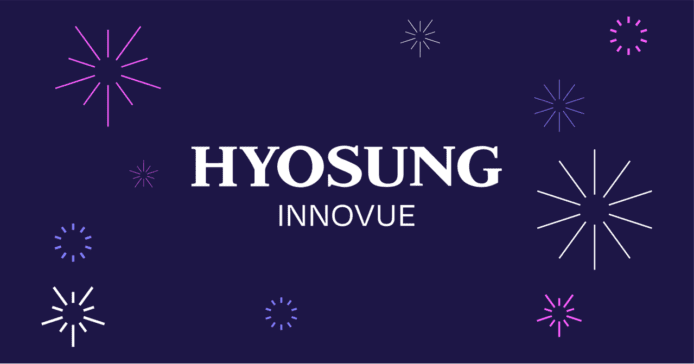
by Bradley Cooper — Editor, ATM Marketplace
When customers think of ATMs, they typically think of a device at a bank. However, ATMs also have a large presence in retailers ranging from big box stores like Walmart to small family-owned gas stations.
Typically these retail ATMs have had fewer features than bank ATMs, but that may be changing. ATM Marketplace reached out via an email interview to Brad Nolan, EVP and CMO at Hyosung America, to learn more about how the market is changing.
Q: What are some of the challenges of deploying ATMs in retail?
A: Space in retail — particularly c-stores — is extremely limited, therefore it is imperative that the ATMs provide maximum value to the merchants.
Value can come in multiple formats. While earned fees shared by the ATM operators can be a good source of revenue, the major benefit comes by driving foot traffic into the stores. Studies have shown that ATM users in retail tend to spend more at POS after getting their cash (and they pay with card). Working with retailers to ensure optimal ATM placement and interior/exterior signage is paramount to creating awareness for consumers.
Security can also be a challenge. With inflation looming on the global economy and prices increasing for consumable goods, we unfortunately see fraud/theft/crime increase in parallel. Physical and logical attacks on retailer cash endpoints including ATMs is increasing.
Q: Why don’t retail ATMs do more and function like ATMs in bank branches?
A: The retail ATM business exploded in the late 90s with Hyosung’s introduction of small footprint, cost-effective cash dispense ATMs that could fit virtually anywhere.
Legacy bank grade ATMs with depositories were historically too big to fit into most retail stores. On top of that the TCO for a cash-in/cash-out device was prohibitive to most operators.
Even if hardware pricing wasn’t an issue, the only incremental transaction type that the operator could offer is deposits, as ATM EFT networks only support 4 basic transaction types: withdrawals, deposits, transfers and balance inquiries
To further complicate things, turning on deposits would require the operator to have agreements with each individual bank, as there is no “open deposit network” in the US.
That said, things are beginning to change.
Stay up to date with Hyosung news! Learn about the latest ATM technology here
Stay up to date with Hyosung news! Learn about the latest ATM technology here CONNECT
Q: What exactly is changing?
A: First off, the size of cash-in/cash-out devices has come down — in fact there are now small footprint cash recycling ATMs on the market that are no bigger than a standard cash dispense ATM.
As the technology has matured, TCO has also come down to a point where the additional investment in hardware and service can be justified so long as they can open the aperture on transactions and services provided.
As stated before, the device is only half of the equation. To enable these devices to do more — everything from using cash to pay bills, make deposits, and send money — Hyosung is launching the first ever ATM App Store to make it easy for operators to quickly and easily download these new services to their ATMs.
Q: That sounds exciting, but does that mean the operators have to buy a whole new cash-in/cash-out ATM to take full advantage?
A: Not exactly. Hyosung just recently launched its Series X10 Cash-in-Sidecar. The device can be “bolted on” to any existing Hyosung cash dispenser to transform it into a full function device. It’s an upgrade, not a replacement.
For new deployments Hyosung has also launched the Series X Metakiosk — a cash-in/cash-out device that is purpose build for payments, gaming, and more. It has a large immersive touchscreen, barcode scanner, NFC reader, ticket-in, ticket-out and more.
Both of these entrants are on top of the Hyosung 8100 — the industry leading small footprint cash-recycling ATM.
Q: So are retail ATM operators going to compete with the banks?
A: Not at all, they are helping the banks. Financial institutions are under tremendous pressure to reduce their operating expense. The number of bank branches continues to fall, in fact the rate of branch closures has been doubling every three years .
Banks need a lower cost distribution option to support customer transactions that happen in the branches today — namely cash deposits. More and more they are happy to refer their customers to ATMs placed at local retailers, who many times are more convenient vs. having to go to the branch.
Then there is the increasing gap of unbanked and underbanked consumers who need digital on-ramps for cash. Cash utilization is core to how they make and receive payments on a daily basis. A network of cash-in devices, in combination with our App Store can be a game changer for convenience. Why travel to the mobile phone store to pay your bill in cash when you can use the ATM or kiosk around the corner from your house? In fact they can pay all of their bills and send money to family all in one stop. It does not get more convenient than that.
Q: Is there anything else for retail ATMs on the horizon?
A: Yes. Historically retail ATMs were there solely for consumers and had little to do with the cash ecosystem of the actual store. Looking ahead you will also see a blurring of the lines between POS, order and pay kiosks, self check-out kiosks, smart safes and traditional ATMs.
For example, as cash recycling ATMs become more prevalent, retailers are now using them as smart safes where they can sell cash drawer overages and get immediate credit with their banking institution. Cash used for over-the-counter POS is deposited to the ATM and then re-purposed for withdrawal. These types of efficiencies will begin to change the dynamics of retail store operation.


